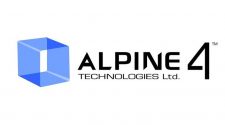Senior man using music smartphone app and drinking coffee in downtown center outdoor – having fun … [+]
Gartner released its 2020 technology trends last month with great – and appropriate – fanfare. Lots of us – including me – look forward to the trends analysis every year. Before I comment, we should all note just how volatile the technology world has become. So let me say at the outset that I appreciate Gartner’s galvanizing a ton of trends into coherence.
Good & Obvious
1. Automation – and “hyperautomation” – are obvious trends. The robotic process automation (RPA) revolution is already in full swing. It’s hard to find a company not looking at processes it can automate, and it’s harder to find a company not keenly aware of technological leverage in the RPA mission. Artificial intelligence and machine learning are the real digital twins here, and assessments of AI/ML potential are literally everywhere. Combining the hot new tools with the old standbys (DBMS, analytics) is the natural order of things. Gartner has written insightfully in the past about “augmented analytics,” which fits well with this trend. I was surprised no mention of augmented analytics was made here. “Hyperautomation” I assume means RPA on steroids by leveraging AI/ML and anything else that augments automation. Why not?
2. Digital multiexperiences are happening already, all the time. The ability to augment (again) reality with AR and VR tools has improved significantly in the past five years. Gartner is superb when it combines obvious trends and declares a new trend. The multiexperience trend it describes is just that: the combination of obvious parts to create a predictable whole greater than the sum of the parts. Not sure about the “technology-literate people” versus “people-literate technology.” Vintage Gartner!
3. Could not agree more with the “democratization” of technology. This trend is consistent with trends that began decades ago when Apple introduced the Macintosh for the rest of us, that is, with a user-computer interface that was “intuitive.” Remember? Since then everyone’s got an accelerometer in one device or another that displays their personal mileage whenever they ask. Personal assistants of all kinds have emerged over the past five years that require little or no training at all. I agree that full democratization will include “democratization of data and analytics (tools targeting data scientists expanding to target the professional developer community), democratization of development (AI tools to leverage in custom-developed applications), democratization of design (expanding on the low-code, no-code phenomena with automation of additional application development functions to empower the citizen-developer) and democratization of knowledge (non-IT professionals gaining access to tools and expert systems that empower them to exploit and apply specialized skills beyond their own expertise and training).” “Citizen platforms” are everywhere, especially among the major cloud vendors. In fact, nearly all of the “as-a-service” models are designed to be client friendly. Low code programming – well underway – is another platform that supports the democratization trend on its way to automated programming. Augmented analytics?
4. Human augmentation? Yes! Already here! IOT and wearables is exploding. Smart devices on – or even in – our bodies are here. What about capsules? Sports applications? Healthcare applications? Smart cities? Sure. Technologies like pharmacogenomics – just to name one – have already demonstrated the power of genomic leverage. If the trend is to remind us that this is coming, it fails, but if the trend is to affirm the direction, it works.
5. “Transparency and traceability” is a fascinating, important area – incredibly important – but predictions are missing! Sure, transparency and traceability is essential in the age of surveillance capitalism. California has taken steps here with the first data privacy law in the country. GDPR is old news that apparently most Americans – and definitely American lawmakers – somehow missed. So what’s the prediction, Gartner? Will the US (and rest of the world) become GDPR aware? Will laws be passed to reflect meaningful data protections across the US? Will citizens demand transparency and traceability? Who knows? I don’t; what does Gartner think? Will the California law spread across the US? Will GDPR become an international accord? Will facial recognition technology be regulated? Lots of possibilities here. What will happen? Entrepreneurs need to know the range of possible regulatory actions, if any. Developers too. A million business models depend on the lack of privacy.
6. Edge computing – even when it’s “empowered” – is a great concept, a useful way to think about the distribution and location of computing and communications resources, especially if you’re worried about latency. But should we? I agree that EC will help diffuse networks clogged with IOT devices. But is this necessary when computing and communications technology is challenging Moore’s Law (in a good way)? Maybe. Maybe not. Perhaps EC is more a governance issue than a throughput one.
7. Distributed clouds are already a thing. Not sure if this is a predictive trend or another affirmation.
8. “Autonomous things” I think are robots, broadly defined: “Autonomous things are physical devices that use AI to automate functions previously performed by humans. The most recognizable forms of autonomous things are robots, drones, autonomous vehicles/ships and appliances.” Yes. Obviously.
9. A prediction! “Practical blockchain” will be fully scalable by 2023: “Blockchain has the potential to reshape industries by enabling trust, providing transparency and enabling value exchange across business ecosystems, potentially lowering costs, reducing transaction settlement times and improving cash flow.” This prediction is bold, but possible. The key word is “potential.” Lots of things must be true for blockchain to be “complete.” Predictions here would be very helpful.
10. AI security is a growing challenge, to put it mildly. It’s also an unsolvable problem: there is no such thing today – nor will there ever be – a perfectly secure network, application or data base. Predictions here should focus on the rate and location of the growth of AI security challenges. It should also discuss where liability and insurance regulations and laws will go in response to inevitable breaches. The lack of intelligent algorithmic transparency will exacerbate these challenges.
The Renamed
Gartner always does a good job predicting what needs to be predicted. Much of this year’s trends analysis focuses on trends well underway. Some of the trends are renamed. “Autonomous things” are robots. “Hyperautomation” is narrow and general AI. “Multiexperiences” are IOT wearables, AR and VR. Some of the trends are getting a little old, like edge computing which we’ve been hearing about for years. Sometimes it feels like Gartner struggles to find trends with legs, and when it can’t, it retreats to renaming some of its older ones (or trends fairly obvious in the industry).
The Missing
The companies with which I interact and study are obsessed with business processes, business process management and RPA. This obsession is, by degree, new. A prediction here might be the arrival of fully interactive, intelligent process inventories capable of automating RPA. Strategic Agile is strong as well, where operational Agile – development – is extending to new holistic ways of working. There’s some caution about the ROI of AI and ML beyond traditional “if-then” AI which is conceptually more popular than ever. 3D printing is now 3D manufacturing. Cloud computing is maturing into whole enterprise platforms where companies rely upon their cloud providers to literally run their entire businesses. What does this mean for application development, technology adoption, security, etc.? Predictions?















